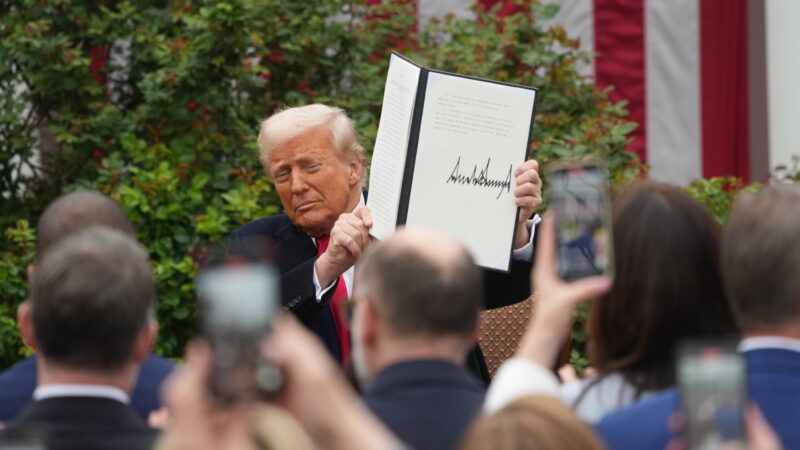Trump's Tariffs Target Uninhabited Islands, Economic Dead Zones, and Individual Regions of France
The nonsensical list of territories subject to the White House's new "reciprocal" tariffs shows how amateurish the administration's new trade policy is.

If you've ever played the online game Worldle, where players guess a country based on its silhouette, you'll know the frustrating experience of failing to accurately identify the day's blob that turns out to be some insignificant island territory.
Frustrated Worldle players (at least American ones) can now have their revenge on these random statelets, thanks to President Donald Trump's newly unveiled tariff regime.
FULL LIST: Liberation Day pic.twitter.com/ZBiRuJBCAr
— Rapid Response 47 (@RapidResponse47) April 2, 2025
Included in the White House's "Liberation Day" list of countries to be hit with "reciprocal" tariffs are a host of uninhabited islands, economic dead zones, and administrative subregions with no independent trade policy of their own.
Heard and McDonald Islands, an uninhabited Australian territory, will now pay a 10 percent tariff on any exported goods the penguins there manage to export to the U.S.
So will the British Indian Ocean Territory—a U.K. overseas territory that (thanks to a mid-century ethnic cleansing) is depopulated but for military personnel and contractors at the island's British and American bases.
The White House's list also includes the French overseas departments and regions of French Guiana, Reunion, Guadeloupe, Martinique, and Mayotte—all of which are legally part of France proper, and therefore have their trade policy set by the European Union.
How exactly uninhabited islands and administrative regions of France ended up on the White House's tariff list isn't exactly clear.
All do have their own two-letter country code on the United Nations Code for Trade and Transport Locations (UN/LODE), which is used to facilitate trade and generate trade data.
It's possible then that the White House just cut and pasted from this list to create its own tariff targets.
To be sure, there are about 50 countries and territories on the UN/LODE list that don't appear on the Trump administration's tariff list. The White House's list is at least curated enough to exclude U.S. overseas territories, the Vatican, and Palestine—all of which have their own UN/LODE code.
Reason has written prolifically on the economic illogic of Trump's tariffs. Social media is aflame with posts pointing out the administration's ludicrous formula for calculating the "reciprocal tariffs" it will charge other countries.
Amazingly, the inclusion of uninhabited territories and administrative regions of larger countries and trade blocs fails to even match the administration's own protectionist logic.
If the new tariffs are supposed to equalize bilateral trade balances between the U.S. and every other country, it makes little sense that the White House also levy tariffs on places that have no economic activity.
It also doesn't make a lot of sense that it would tariff European overseas regions that don't set their own trade policy.
If the White House is trying to create an equal balance of exports and imports with French Guiana, as opposed to France as a whole, why not also have Paris-specific tariffs?
(E.U. law does allow for reduced taxes on locally produced products in its overseas regions, but Trump's tariffs don't reflect this. France's overseas departments get their own tariff rates, but Spain's Canary Islands, which has reduced taxes on locally produced goods but doesn't have its own UN/LODE code, don't.)
The cut-first, paste-next, and ask-questions-later nature of these new tariffs is just more evidence of how Trump's global round of tariffs is not just impoverishing, but also silly and amateurish.
Rent Free is a weekly newsletter from Christian Britschgi on urbanism and the fight for less regulation, more housing, more property rights, and more freedom in America's cities.




Show Comments (16)